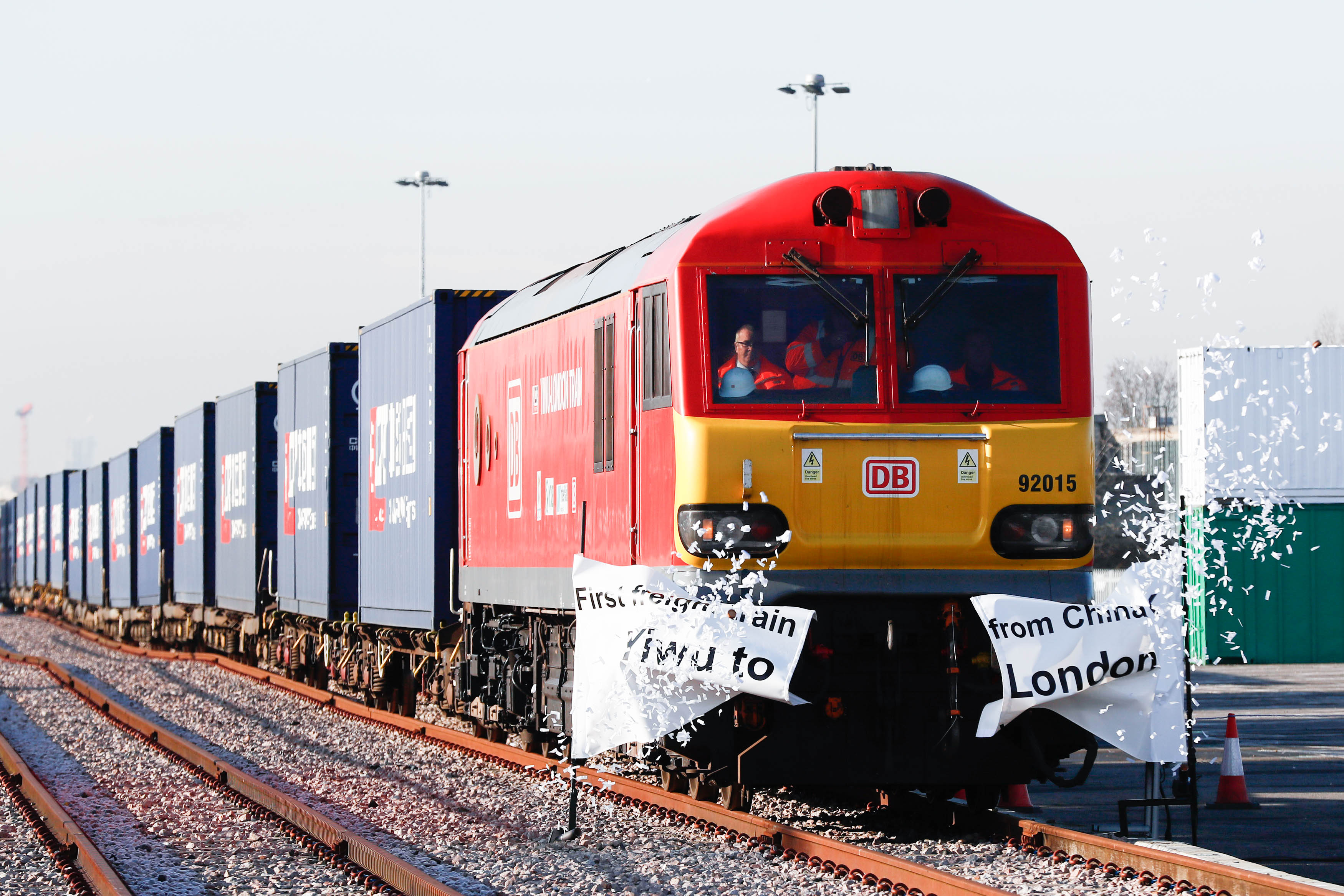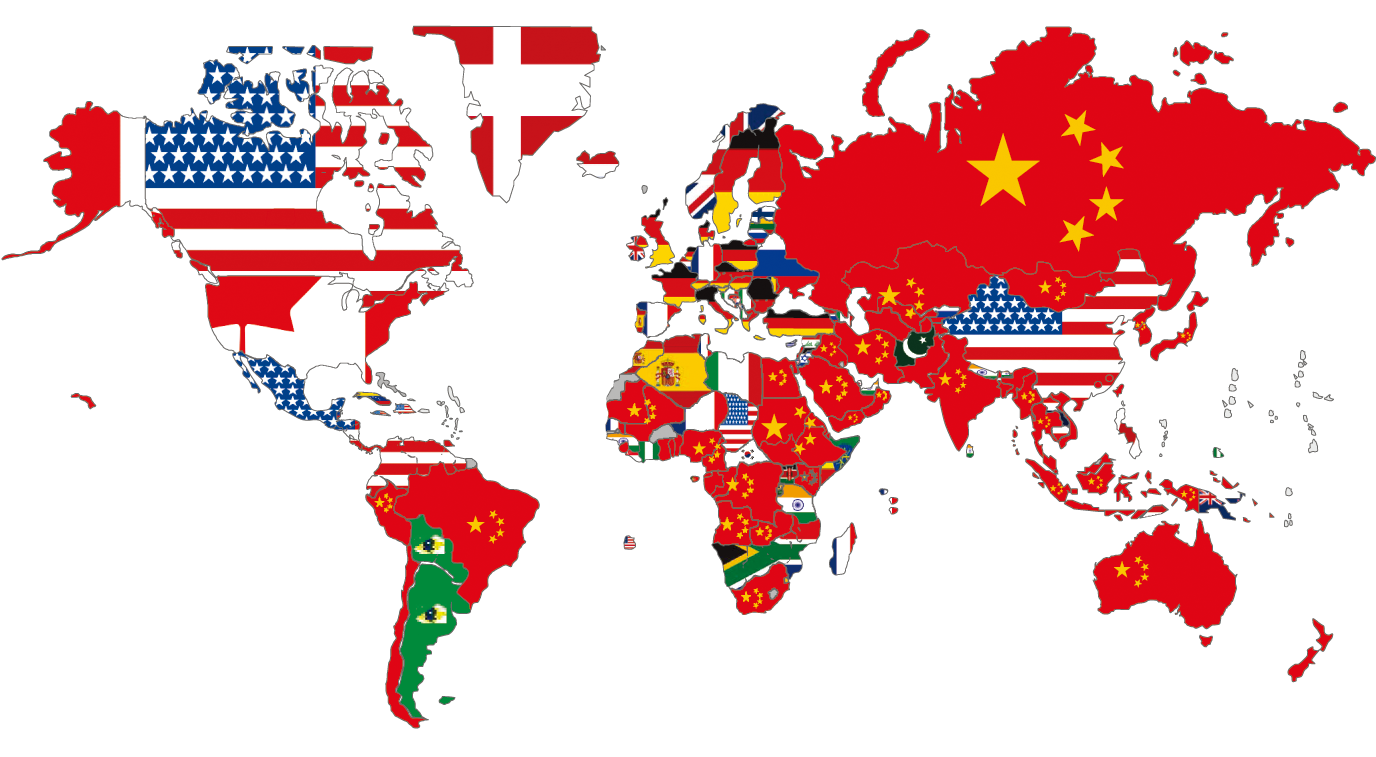As the protectionist spirit takes hold across the North Atlantic, Dean Houmin Yan describes how China's One Belt One Road project is promoting connectivity and collaboration across Eurasia using the Public-Private-Partnership model, and how China is emerging as a surprise champion of global free trade.
The globalization project is due for a reset. With the United Kingdom's impending exit from the EU and the accession of the Trump Administration in the United States, the two countries who have held aloft the torch of free trade over the past two centuries are lurching onto an opposing tack. Protectionism rather than free trade is the new mantra. As globalization enters a new era, the mantle of free trade champion is passing — surprisingly — to China.
Europe is in flux. For the people of the United Kingdom, the conflation of the four European Union freedoms — the free movement of goods, of services, of capital and of people, was one freedom too many. In a continent with widely disparate economies, that fourth freedom — and the reality of open borders — was stunningly rejected by Brexit. Whether the peoples of Europe will follow suit is now down to this year's elections in various European countries.
Walls or open markets?
On the other side of the Atlantic, President Trump is putting America First. Symbolic of the new protectionist spirit, a wall is being built. Peter Navarro heads up the White House National Trade Council with a strategy to renegotiate existing trade deals and scrap bad ones. This means "no" to the Trans-Pacific Partnership, and at the very least a renegotiation of the North American Free Trade Agreement. Meanwhile, at the Davos Economic Forum in January, China President Xi Jinping upheld the benefits of globalization and open markets. In the midst of the Brexit and America First mayhem, China's One Belt One Road (OBOR) project is emerging as a bulwark of world free trade.

© Reuters Pictures
“ Seamless logistics are central to the free trade project ”
China's first direct freight train to UK
Seamless logistics are central to the free trade project. The day after British Prime Minister Theresa May stood up to finally offer a definition for Brexit in January 2017, the first direct goods train from China to the United Kingdom arrived in London. The end of an 18-day journey, of 12,000 km, with two changes of gauge, the service passed through Kazakhstan, Russia, Belarus, Poland, Germany, Belgium and France before entering the UK via the Channel Tunnel. The train hauled 34 containers packed with £4 million worth of clothes, visible proof that One Belt One Road is reaching out to the metropolitan heartlands of the United Kingdom and Europe. This train is just one of 14 dedicated rail routes linking China directly to European nations.
Win-win scenario
At the heart of the OBOR project is China's strategy to promote connectivity and collaboration across Eurasia. "Vision and Actions on Jointly Building Silk Road Economic Belt and 21st century Maritime Silk Road" by the National Development and Reform Commission (NDRC), released in March 2015, speaks a language very different to the Trump protectionist mantra. It talks of mutual benefit, and seeks "a conjunction of interests and the 'biggest common denominator' for cooperation so as to give full play to the wisdom and creativity, strengths and potentials of all parties." According to Beijing, this is the classic win-win scenario. OBOR fosters collaboration, leveraging each country's advantages in technologies, management and resources. Overall, the vision is to reform production structure. China's high quality of services and resources will flow to the OBOR countries, and push forward supply-side structural reform to the benefit of all.
Public-Private-Partnerships
The driving force behind the new Silk Road is the tried and tested Public-Private-Partnership (PPP) model, which is being pursued at full steam ahead. According to a joint statement released by the China Securities Regulatory Commission and NDRC in December 2016, PPP infrastructure projects established for at least two years may now raise funds by issuing asset-backed security products. Given that there are more than 10,000 China PPP projects, with an investment of more than US$1.85 trillion, PPPs are set to gain significant leverage along the Silk Roads in 2017.
The PPP model has been chosen for several reasons. They are excellent vehicles for underpinning the finance and management of large scale infrastructure projects. Their transparent tendering mechanisms facilitate the OBOR project selection process, and the variety of models available such as build-operatetransfer (BOT) or concession, can be adapted to suit various kinds of project. Risk management is another area where the PPP model scores. Governments tend to be more expert in areas of legally related risk, whilst the private sector excels in managing financial and operational risks. Finally, the long-term framework of OBOR projects, typically some 20 to 30 years, means that government plays an important role as guarantor to underwrite the project's success.
The largest trading partner in goods in 2014

The map shows each country's major trading partners, exports and imports combined
© Digital Globalization: the New Era of Global Flows/ McKinsey Global Institute
Chain morphs to matrix
As North America, the Pacific region and the United Kingdom face uncertain and increasingly protectionist futures, OBOR is a major growth point for international trade with China at its fulcrum. China is building on existing strengths. Some of the fastest rates of growth in GDP are in countries along the OBOR corridors, and China is already the largest trading partner of many of these countries. The growth points are at the European end destinations, and that is where the dedicated direct goods train services are beginning to play their part.
This is not however merely a new version of the traditional supply chain system, to produce in the east and consume in the west. The recent Fintech surge, the advancement of logistics systems, the use of multi-channels in marketing, and the ubiquitous presence of e-commerce, are resulting in more fragmented, diversified demand in the production process. Both production and consumption are going global. The chain is morphing into a matrix.
Anti-austerity demonstrations in Greece
© Reuters Pictures
Is the loss of manufacturing really a loss?
As part of this process, many countries along the old Silk Roads are reinventing themselves as major producers. Take Bangladesh, a lead player in the manufacturing industry in South Asia. Its population of 160 million has enjoyed strong economic growth, with a GDP of over 6% p.a. over the past six years. Garment factories have moved here from China in large numbers. Protectionist wisdom would see this as a threat to the incumbent manufacturing nation. But is China really suffering?
As the world's largest importer of textile raw materials, China possesses a high level of automated textile processing industry and has excess capacity. The shift of the manufacturing industry to Bangladesh actually benefits China's export of textiles. It releases excess capacity in production, and accelerates the transformation of manufacturing industry towards higher value added industries. From a classic supply chain perspective, allocating the production process to a low-cost country, enhances the overall efficiency of the chain. So, the OBOR infrastructure investment, reduces the cost of logistics and trade, and encourages industry transformation.
The Marshall Plan
How should we understand One Belt One Road, compared to two other global projects, the 1946 American Marshall Plan and the 2014 European Union "Juncker Plan"? Opinion remains divided on the post-World War Two Marshall Plan. Some view it as an American act of benevolence, helping a devastated Europe to get back on its feet. Others as an expedient means to creating a market for America as it retooled its factories from war production to domestic goods. The plan certainly also had a political dimension, acting as a bulwark for supporting western democracies at a time when the Iron Curtain was coming down over Europe, and the threat of Soviet expansion was very real. It necessitated strong leadership from the US, who provided support in finance, technology and facilities, and spawned international institutions. The plan created a template for stronger European cooperation, later enshrined in the EU, and has proved influential down to the present day.
The Junker Plan
The 2014 Junker Plan arose in very different circumstances. This large-scale infrastructure investment plan was designed to unlock public and private long-term investments in the "real economy". After seven years of stagnation, the aim was to kick-start the European economy by investing in energy, transport infrastructure and other socially-beneficial assets. So far there are seemingly positive consequences: A European Fund for Strategic Investments to develop the real economy has been set up. New investment has flowed to the 27 member states to the tune of EUR138.3 billion in the first 18 months. But mid-term the jury is out. Europe remains in crisis. There are unprecedented levels of youth unemployment in Greece and Spain, and vast flows of refugees have entered Europe from Syria and Africa at levels that cannot be comfortably assimilated under a multicultural model. Looking ahead, a stagnating European economy and the rise of nationalistic political parties with overtly protectionist agendas threaten regional unity.
One Belt One Road
One Belt One Road differs from the Marshall Plan in that it was not prompted by an outright crisis. There was however an economic slowdown in China post-2009, and the OBOR initiative can be seen as a stimulus to China's flagging State Owned Enterprise sector. Like both predecessors, it is ambitious and of vast scope. More than 60 countries from Asia, Africa and Europe are involved, including many developing countries with diversified economic environments. Funding infrastructure is vital. A Silk Road Fund and Asian Infrastructure Investment Bank have been set up to encourage private companies to invest, and produce a flow of policies, infrastructure, trade, finance and capital, connecting people of many countries. The new Silk Roads seek to create win-win situations within expanding regional economies.
Long-term PPP
OBOR is powered by long-term PPP agreements between government and private entities for the provision of public services and the development of infrastructure. Responsibilities and returns are shared by both sides. A private sector strong in analysis, innovation, operation, and risk control provides funds. And long-term PPP contracts will address the issue of under-maintenance of public infrastructures.
Results are impressive: To date, the People's Republic of China Ministry of Finance has approved 232 model projects, with a total investment of 802.54 billion Yuan. The total number of archived projects is 9,285, with a total investment of 10.6 trillion Yuan. Overall, the private sector accounts for nearly 40% of project participation.
Hong Kong
In all of this, Hong Kong has a crucial part to play. The region's well established financial and legal systems, together with mature logistics and retail service sectors, provide an excellent platform. In partnership with countries possessing less developed systems, Hong Kong can be a leader in OBOR. And the College of Business at CityU is set to play a key role. The new International PPP Specialist Centre of Excellence for Public Transport Logistics will develop OBOR research projects, international policy briefs, and share PPP best practices and international PPP standards in public transport logistics.
The Wheels of Commerce
It has been said that a volume of Jewish history is equal to half the history of Western civilization, a volume of Henan history is equal to half of Chinese history, and a volume of Silk Road history is equal to half of the history of globalization. But the Silk Roads are not confined to history. A new chapter is being written, and in a disrupted world, One Belt One Road policies, infrastructure, trade, finance and capital, are lubricating the wheels of commerce. At odds with the North Atlantic protectionist zeitgeist, and driven by a still expanding China economy, OBOR is a vital contributor to global economic growth. As the world reaches for the global reset button, China and the countries of the ancient Silk Roads play a pivotal role in keeping the wheels of commerce turning.




